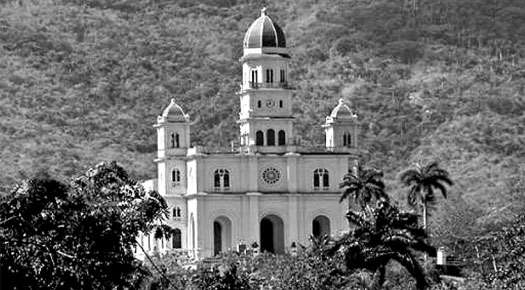
The construction of Cuba’s first Roman Catholic Church since 1959 is set to commence in the suburb of Sandino in Pinar del Rio. This bold move comes after the country recently received a warm reception from both the United States as well as the Vatican.
“There is money to begin, building materials to begin, and we have the permissions to start, so everything is ready,” said Jorge Enrique Serpa Pérez, the bishop of Pinar del Río.
In Cuba, this is an important development, considering the country has a largely Catholic population but a long history of jailing and exiling priests since the 1959 Cuban Revolution, when Fidel Castro came to power. Some questioned the government’s motives after it approved of the proposal for the church’s construction in August 2014. Pedro Rodriguez, executive director of Foundation for Human Rights, Cuba, said at that time that the approval was a public scam aimed at representing Raul Castro as a true reformer.
“The Cuban government, it's mainly interested in attracting investors and [giving] the impression that the Cuban government, it's evolving into a less totalitarian experiment,” said Rodriguez. “Unfortunately, the Cuban Catholic Church has been very passive in regards to confronting, peacefully of course, the government.”
American President Barack Obama said in December of last year that the United States would attempt to normalize diplomatic relations with Cuba, as he praised the Pope for playing an important role in helping the two countries reconcile. Many critics noted however that Cuba’s human rights record continues to worry administrators.
“First, I am concerned that normalizing diplomatic ties without addressing [Fidel] Castro's horrendous human rights record serves as a de facto endorsement for one of the most oppressive regimes in recent history,” said the Samuel Rodriguez, president of the National Hispanic Christian Leadership Conference. “As a result of Castro's totalitarian rule, millions live in poverty, thousands lie in prisons, and many have lost their lives. In addition, the God-given rights of Cuban citizens are held hostage to governmental persecution.”
Rodriguez also hoped that the warm reception received by Cuba would serve as a catalyst in unleashing adherents of Jesus to serve as a church not only inside but even outside the island nation and address the physical as well as spiritual needs of Cubans. Some priests in the country also went on confirm that the government was attempting to reconstruct a relationship with the Vatican.
“We have wanted to build this church for many years, but it wasn't possible,” said Father Cyril Castro, the pastor of Las Martinas. “Finally we can say that it is underway. … People can say that Catholicism was lost in Cuba, but it's not true," he added. "The family of faith has endured. In fact, we are showing the fruit of those roots.”
The priest said it would take at least two years to build the church, which is expected to house approximately 200 people.
Photo Credits: Authentic Cuba Tours
